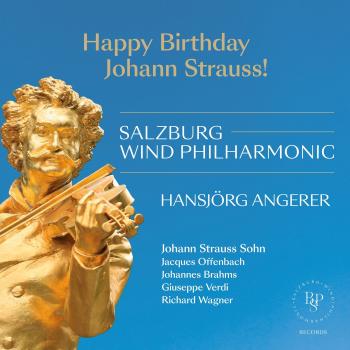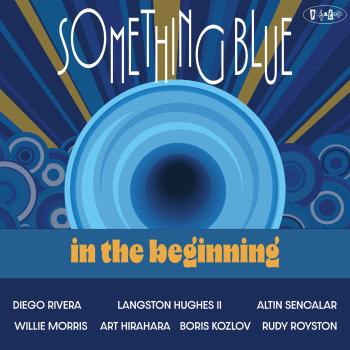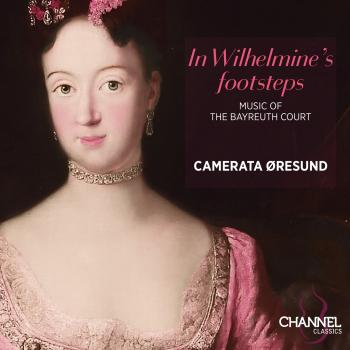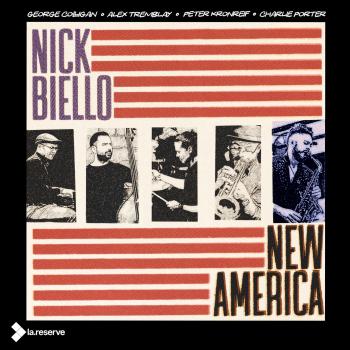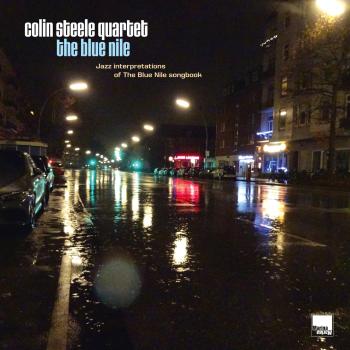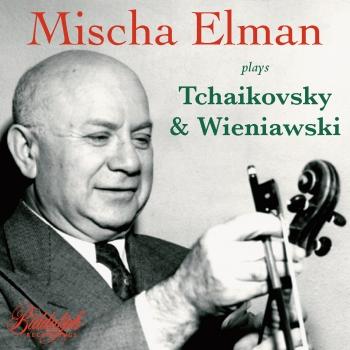
Mischa Elman Plays Tchaikovsky & Wieniawski (Remastered) Mischa Elman
Album info
Album-Release:
2023
HRA-Release:
07.07.2023
Label: Biddulph Recordings
Genre: Classical
Subgenre: Concertos
Artist: Mischa Elman
Composer: Peter Iljitsch Tschaikowsky (1840-1893), Henri Wieniawski (1835-1880)
Album including Album cover Booklet (PDF)
- Pyotr Ilyich Tchaikovsky (1840 - 1893): Song Without Words, op.2 no.3:
- 1 Tchaikovsky: Song Without Words, op.2 no.3 03:03
- Scherzo, op.42 no.2:
- 2 Tchaikovsky: Scherzo, op.42 no.2 04:09
- Andante cantabile from String Quartet in D, op.11:
- 3 Tchaikovsky: Andante cantabile from String Quartet in D, op.11 06:28
- Valse sentimentale, op.51 no.6:
- 4 Tchaikovsky: Valse sentimentale, op.51 no.6 02:21
- Valse from Serenade for Strings, op.48:
- 5 Tchaikovsky: Valse from Serenade for Strings, op.48 04:47
- None but the Lonely Heart, op.6 no.6:
- 6 Tchaikovsky: None but the Lonely Heart, op.6 no.6 02:51
- Russian Dance, op.40 no.10:
- 7 Tchaikovsky: Russian Dance, op.40 no.10 04:05
- Henryk Wieniawski (1835 - 1880): Légende, op.17:
- 8 Wieniawski: Légende, op.17 08:43
- Mazurka in D, op.19 no.2 ‘Dudziarz’ (Le Ménétrier):
- 9 Wieniawski: Mazurka in D, op.19 no.2 ‘Dudziarz’ (Le Ménétrier) 04:14
- Mazurka in G minor, op.12 no.2 ‘Chanson polonaise’:
- 10 Wieniawski: Mazurka in G minor, op.12 no.2 ‘Chanson polonaise’ 04:06
- Mazurka in A minor, ‘Kujawiak’:
- 11 Wieniawski: Mazurka in A minor, ‘Kujawiak’ 03:36
- Polonaise brillante No.1 in D, op.4:
- 12 Wieniawski: Polonaise brillante No.1 in D, op.4 06:00
- Violin Concerto No.2 in D minor, op.22:
- 13 Wieniawski: Violin Concerto No.2 in D minor, op.22: I Allegro moderato 11:47
- 14 Wieniawski: Violin Concerto No.2 in D minor, op.22: II Romance: Andante non troppo 04:53
- 15 Wieniawski: Violin Concerto No.2 in D minor, op.22: III Allegro con fuoco – Allegro moderato (à la Zingara) 07:04
Info for Mischa Elman Plays Tchaikovsky & Wieniawski (Remastered)
From his teens onwards, Mischa Elman was regarded in his lifetime as one of the greatest violinists of the 20th century. A student of the legendary Leopold Auer, Elman was one of the first of the great Russian-Jewish violinists to dominate violin playing in the 20th century. This album – the first in a series of Elman releases from Biddulph – includes short pieces by Tchaikovsky and Wieniawski, including the latter’s Second Violin Concerto in D minor, op.22. Made in the early 1950s, these recordings have never appeared before, and vividly document Mischa Elman with his fabled luscious tone. Highlights include such favourites as Tchaikovsky’s heart-wrenching None but the Lonely Heart and nostalgic Valse sentimentale, as well as the haunting Légende and Polonaise brilliante no.1 by Wieniawski.
The short pieces with piano by Tchaikovsky and Wieniawski were recorded over five sessions in the Victor Studio No.2 in New York on 23 & 25 September 1953 and 7, 9 & 14 October 1952, and released on RCA Victor LM 1740. The Wieniawski Concerto was recorded in the Philadelphia Academy of Music on 23 June 1950, and first released on RCA Victor LM 53.
Mischa Elman, violin
Robin Hood Dell Orchestra
Alexander Hilsberg, conductor
Digitally remastered
Mischa Elman
(born Mikhail Saulovich) had one of the longest careers of anyone included in this book. His early career is dominated by his status as one of Auer’s most celebrated pupils, in which he enjoyed a friendly rivalry with Franz von Vecsey. Auer’s estimation of Elman can be gauged by the fact that he threatened to resign from the St Petersburg Conservatory if its authorities refused to admit him. Indeed, his St Petersburg debut was made through an act of deception: Auer feigned illness at the last minute so that Elman could take his place. Popular enthusiasm for his playing is evidenced by reports of concerts in London. The critic of The Strad magazine noted his ease of execution in the ‘terrific difficulties’ of Tchaikovsky’s Violin Concerto upon his Queen’s Hall debut on 21 March 1905, writing: ‘From the moment he stepped onto the platform until he played his last encore at 11.20pm (and even then the public seemed to want some more) his success in this country was an assured thing.’ Critics in New York in 1908 were rather more circumspect, considering his playing over-emotional.
Zimbalist and Elman were the first two really big names to emerge from the Auer school and it is unsurprising that they, also, were rivals. Indeed, Elman’s career was characterised by his effort to maintain status amongst a number of glamorous competitors, standing up to the great popularity of Kreisler and Heifetz, and later Menuhin, Milstein and Oistrakh. This went on well into the final years of his long career: on 20 November 1955, Elman’s 2.30pm ‘Stradivarius Sunday’ recital at Carnegie Hall was followed by Oistrakh’s at 5.30pm and Milstein’s at 8.30pm!
In Elman’s case, his following stemmed from a quite distinctive musical and technical personality. He received little formal tuition after the age of thirteen and in many ways epitomised a conservative approach no doubt inherited from Auer (although, as is well known, few of Auer’s pupils carried on the nineteenth-century tradition he represented). Thus, Elman considered the pursuit of outright tonal power in modern playing to be a mistake, retaining a fondness for the portamento on account of its vocal qualities. Carl Flesch remarked in his Memoirs that Elman’s playing had ‘a sensuous mellifluence, and Italian bel canto in oriental dress’. Elman fused mainstream European tradition with echoes of his Jewish heritage (he assumed various traits of the klezmer tradition by listening to a gypsy fiddler who knew his grandfather, a renowned klezmer musician). Elman remarks in Gaisberg’s Music on Record: ‘Students are prone to lose sight of the nature of their instrument as a medium second only to the human voice as expressive of tonal beauty.’ His conservative views were corroborated by his repertoire, where he seemed most at home in concertos by Mendelssohn, Tchaikovsky and Wieniawski and championed those of Mozart and Beethoven. His discography attests to his eclecticism, with recordings ranging from Bach to Lalo, whilst his enjoyment of chamber music can be seen in his establishment of a string quartet bearing his name in 1924.
A prolific recording artist, Elman received $35,000 in recording commissions in 1913 and continued to make records until nearly the end of his life. His early discs, many of which have been reissued by Biddulph, show him to be a bewitching performer. Notable recordings, evidencing his suave tone and flexible, pliable performance aesthetic, include the Saenger Scotch Pastorale, Raff’s famous Cavatina and Drdla’s Souvenir – all popular small-scale pieces in the era of salon music and short enough for the early recording processes. Hubay’s Hejre Kati (Hey, Katie) is given a tidy, incisive reading, whilst the fl eetness of Vogrich’s Dans le bois and Sarasate’s Caprice Basque show that criticisms of Elman as technically limited (often linked to his relative lack of formal training) were unfounded.
Elman’s 1929 recording of Tchaikovsky’s Violin Concerto is perhaps one of his best (and most famous) recordings, whilst his large output of the 1950s and 1960s remains a mixed blessing. Most of these performances, including those of Mendelssohn’s Violin Concerto, Lalo’s Symphonie Espagnole and Sarasate’s Zigeunerweisen, are quite leisurely – the Sarasate exceptionally so. He also had a penchant for rather odd rhythmic realisations, evident in the rather halting fi rst movement of the Mendelssohn and the rhythmically eccentric 1947 rendition of the slow movement of Brahms’s Violin Sonata No. 3, Op. 108. His 1959 account of Khachaturian’s Violin Concerto is excellently articulated, but taken very slowly; here also, Elman’s (by now) rather overblown and fl accid tone (with very slow vibrato, especially on the G-string) sounds in turn both out of place and arrestingly nostalgic. More problematic is the sound itself. Elman was famed for his rich tone, which comes across even in acoustic recordings and also in the 1929 Tchaikovsky Concerto and 1930 Sérénade Mélancolique performances. The combination of the recording technology of the 1950s and Elman’s waning powers, however, was not a happy one, his tone often sounding scratchy and tired; but his 1950 recording of Wieniawski’s Concerto No. 2 is certainly one of his more successful. Overshadowed by what are now more famous names from this era, Elman’s playing as preserved on record provides evidence of a violinist who was, when at his best, an individual and captivating performer.
Booklet for Mischa Elman Plays Tchaikovsky & Wieniawski (Remastered)


